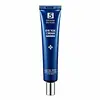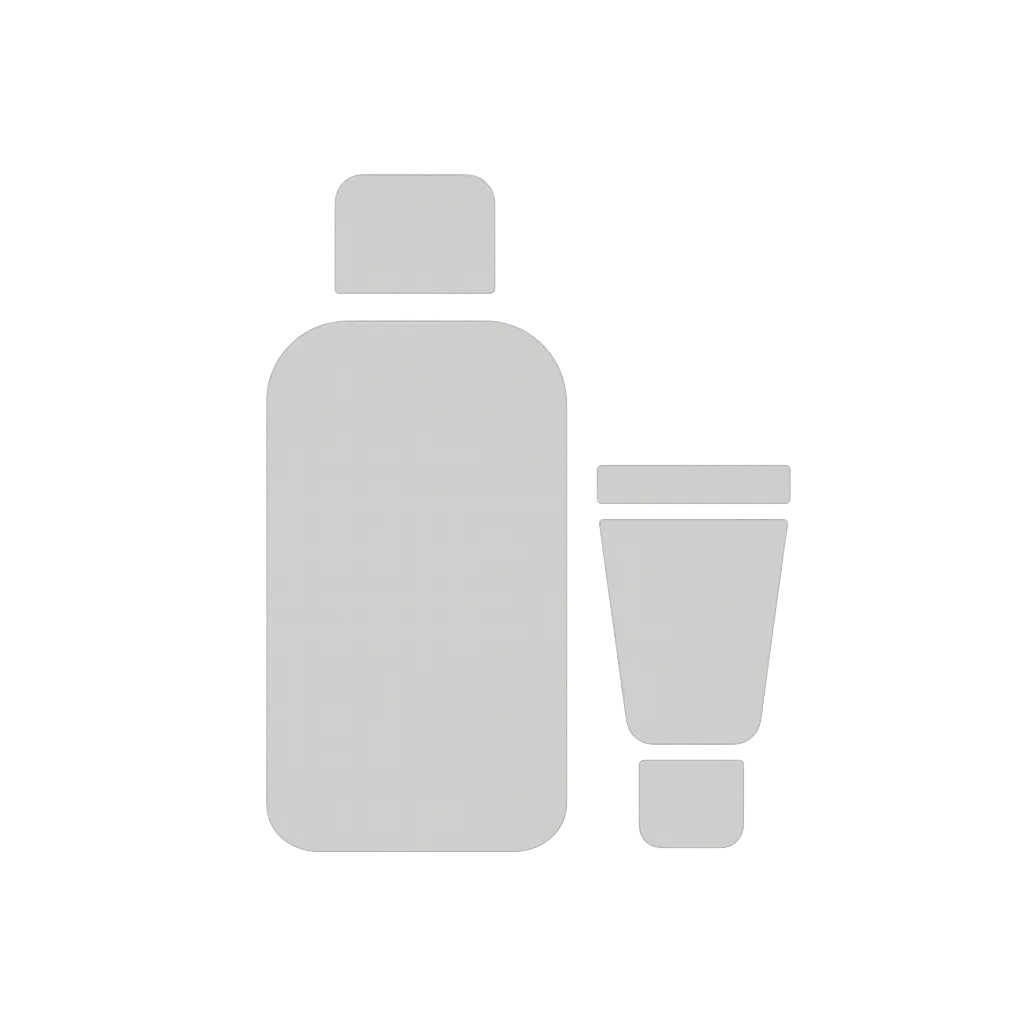What's inside
What's inside
 Key Ingredients
Key Ingredients

 Benefits
Benefits

 Concerns
Concerns

 Ingredients Side-by-side
Ingredients Side-by-side

Water
Skin ConditioningButylene Glycol
HumectantCaprylic/Capric Triglyceride
MaskingCetearyl Alcohol
EmollientGlycerin
HumectantStearic Acid
CleansingPolyglyceryl-3 Methylglucose Distearate
EmulsifyingCyclopentasiloxane
EmollientUrea
BufferingC12-15 Alkyl Benzoate
AntimicrobialGlyceryl Stearate
EmollientHydroxyacetophenone
AntioxidantCarbomer
Emulsion StabilisingTriethanolamine
BufferingDimethicone
EmollientBetaine
HumectantPropanediol
SolventMacadamia Ternifolia Seed Oil
EmollientLimnanthes Alba Seed Oil
Skin ConditioningEthylhexylglycerin
Skin ConditioningPanthenol
Skin ConditioningPvp
Emulsion StabilisingAdenosine
Skin ConditioningDisodium EDTA
Camellia Sinensis Leaf Extract
AntimicrobialLavandula Angustifolia Extract
Skin ConditioningRosmarinus Officinalis Leaf Extract
AntimicrobialSodium Hyaluronate
HumectantAcetyl Hexapeptide-8
HumectantAloe Barbadensis Leaf Juice
Skin ConditioningPalmitoyl Tetrapeptide-7
Skin ConditioningPalmitoyl Tripeptide-1
Skin ConditioningHydrolyzed Collagen
EmollientScutellaria Baicalensis Root Extract
Astringent1,2-Hexanediol
Skin ConditioningAloe Barbadensis Leaf Extract
EmollientBioflavonoids
Skin ConditioningBrassica Oleracea Italica Extract
AstringentSh-Oligopeptide-1
Skin ConditioningSh-Oligopeptide-2
Skin ConditioningSh-Polypeptide-1
Skin ConditioningSh-Polypeptide-16
Skin ProtectingSh-Polypeptide-3
Skin ConditioningWater, Butylene Glycol, Caprylic/Capric Triglyceride, Cetearyl Alcohol, Glycerin, Stearic Acid, Polyglyceryl-3 Methylglucose Distearate, Cyclopentasiloxane, Urea, C12-15 Alkyl Benzoate, Glyceryl Stearate, Hydroxyacetophenone, Carbomer, Triethanolamine, Dimethicone, Betaine, Propanediol, Macadamia Ternifolia Seed Oil, Limnanthes Alba Seed Oil, Ethylhexylglycerin, Panthenol, Pvp, Adenosine, Disodium EDTA, Camellia Sinensis Leaf Extract, Lavandula Angustifolia Extract, Rosmarinus Officinalis Leaf Extract, Sodium Hyaluronate, Acetyl Hexapeptide-8, Aloe Barbadensis Leaf Juice, Palmitoyl Tetrapeptide-7, Palmitoyl Tripeptide-1, Hydrolyzed Collagen, Scutellaria Baicalensis Root Extract, 1,2-Hexanediol, Aloe Barbadensis Leaf Extract, Bioflavonoids, Brassica Oleracea Italica Extract, Sh-Oligopeptide-1, Sh-Oligopeptide-2, Sh-Polypeptide-1, Sh-Polypeptide-16, Sh-Polypeptide-3
Water
Skin ConditioningGlycerin
HumectantDicaprylyl Carbonate
EmollientTribehenin PEG-20 Esters
EmollientDimethicone
EmollientSqualane
EmollientCetearyl Alcohol
EmollientC12-15 Alkyl Benzoate
AntimicrobialCyclopentasiloxane
EmollientOctyldodecanol
EmollientButylene Glycol
HumectantTetrahexyldecyl Ascorbate
AntioxidantCaprylic/Capric Triglyceride
MaskingAlbizia Julibrissin Bark Extract
MaskingCaesalpinia Spinosa Fruit Extract
Skin ProtectingCyclohexasiloxane
EmollientBisabolol
MaskingGeranylgeranylisopropanol
Skin ConditioningCaffeine
Skin ConditioningPentylene Glycol
Skin ConditioningTribehenin
EmollientDarutoside
Skin ConditioningPalmitoyl Hexapeptide-12
Skin ConditioningPalmitoyl Tripeptide-1
Skin ConditioningAdenosine
Skin ConditioningPalmitoyl Tetrapeptide-7
Skin ConditioningHydrogenated Phosphatidylcholine
EmulsifyingPEG-8
HumectantNarcissus Tazetta Bulb Extract
AstringentRibes Nigrum Seed Oil
EmollientCarbomer
Emulsion StabilisingCardiospermum Halicacabum Flower/Leaf/Vine Extract
Skin ConditioningCeramide Ng
Skin ConditioningRosmarinus Officinalis Leaf Extract
AntimicrobialKappaphycus Alvarezii Extract
Skin ConditioningHelianthus Annuus Seed Oil
EmollientSchisandrin
BleachingLitchi Chinensis Fruit Extract
Skin ConditioningHydrogenated Lecithin
EmulsifyingSodium Methyl Stearoyl Taurate
CleansingChlorella Vulgaris Extract
Skin ConditioningHydroxyphenyl Propamidobenzoic Acid
Skin ConditioningPEG-10 Phytosterol
EmulsifyingHelianthus Annuus Seed Oil Unsaponifiables
EmollientGlyceryl Acrylate/Acrylic Acid Copolymer
HumectantXanthan Gum
EmulsifyingPolysorbate 20
EmulsifyingChlorphenesin
AntimicrobialHydroxyacetophenone
AntioxidantSodium Hydroxide
BufferingWater, Glycerin, Dicaprylyl Carbonate, Tribehenin PEG-20 Esters, Dimethicone, Squalane, Cetearyl Alcohol, C12-15 Alkyl Benzoate, Cyclopentasiloxane, Octyldodecanol, Butylene Glycol, Tetrahexyldecyl Ascorbate, Caprylic/Capric Triglyceride, Albizia Julibrissin Bark Extract, Caesalpinia Spinosa Fruit Extract, Cyclohexasiloxane, Bisabolol, Geranylgeranylisopropanol, Caffeine, Pentylene Glycol, Tribehenin, Darutoside, Palmitoyl Hexapeptide-12, Palmitoyl Tripeptide-1, Adenosine, Palmitoyl Tetrapeptide-7, Hydrogenated Phosphatidylcholine, PEG-8, Narcissus Tazetta Bulb Extract, Ribes Nigrum Seed Oil, Carbomer, Cardiospermum Halicacabum Flower/Leaf/Vine Extract, Ceramide Ng, Rosmarinus Officinalis Leaf Extract, Kappaphycus Alvarezii Extract, Helianthus Annuus Seed Oil, Schisandrin, Litchi Chinensis Fruit Extract, Hydrogenated Lecithin, Sodium Methyl Stearoyl Taurate, Chlorella Vulgaris Extract, Hydroxyphenyl Propamidobenzoic Acid, PEG-10 Phytosterol, Helianthus Annuus Seed Oil Unsaponifiables, Glyceryl Acrylate/Acrylic Acid Copolymer, Xanthan Gum, Polysorbate 20, Chlorphenesin, Hydroxyacetophenone, Sodium Hydroxide
Ingredients Explained
These ingredients are found in both products.
Ingredients higher up in an ingredient list are typically present in a larger amount.
Adenosine is in every living organism. It is one of four components in nucleic acids that helps store our DNA.
Adenosine has many benefits when used. These benefits include hydrating the skin, smoothing skin, and reducing wrinkles. Once applied, adenosine increases collagen production. It also helps with improving firmness and tissue repair.
Studies have found adenosine may also help with wound healing.
In skincare products, Adenosine is usually derived from yeast.
Learn more about AdenosineButylene Glycol (or BG) is used within cosmetic products for a few different reasons:
Overall, Butylene Glycol is a safe and well-rounded ingredient that works well with other ingredients.
Though this ingredient works well with most skin types, some people with sensitive skin may experience a reaction such as allergic rashes, closed comedones, or itchiness.
Learn more about Butylene GlycolC12-15 Alkyl Benzoate is made up of Benzoic Acid and long chain alcohols. It has a low molecular weight.
C12-15 Alkyl Benzoate is an emollient and texture enhancer. Due to its solubility, it is often used in sunscreens to help evenly distribute active ingredients.
As an emollient, C12-15 Alkyl Benzoate helps soften and hydrate your skin. Emollients create a film on your skin that traps moisture within.
This ingredient has been reported to cause eye irritation.
Learn more about C12-15 Alkyl BenzoateThis ingredient is an emollient, solvent, and texture enhancer. It is considered a skin-softener by helping the skin prevent moisture loss.
It helps thicken a product's formula and makes it easier to spread by dissolving clumping compounds.
Caprylic Triglyceride is made by combining glycerin with coconut oil, forming a clear liquid.
While there is an assumption Caprylic Triglyceride can clog pores due to it being derived from coconut oil, there is no research supporting this.
Learn more about Caprylic/Capric TriglycerideCarbomer is a polymer of acrylic acid. Its main role is to create a gel consistency.
A high amount of carbomer can cause pilling or balling up of products. Don't worry, most products contain 1% or less of carbomer.
Cetearyl alcohol is a mixture of two fatty alcohols: cetyl alcohol and stearyl alcohol. It is mainly used as an emulsifier. Emulsifiers help prevent the separation of oils and products. Due to its composition, it can also be used to thicken a product or help create foam.
Cetearyl alcohol is an emollient. Emollients help soothe and hydrate the skin by trapping moisture.
Studies show Cetearyl alcohol is non-toxic and non-irritating. The FDA allows products labeled "alcohol-free" to have fatty alcohols.
This ingredient is usually derived from plant oils such as palm, vegetable, or coconut oils. There is debate on whether this ingredient will cause acne.
Due to the fatty acid base, this ingredient may not be Malassezia folliculitis safe.
Learn more about Cetearyl AlcoholCyclopentasiloxane, or D5, is a silicone used to improve texture of products and trap moisture.
D5 is considered lightweight and volatile. Volatile means it evaporates quickly after application. Once evaporated, D5 leaves a thin barrier that helps keep skin hydrated.
It is also an emollient. Emollients help soften the skin and prevent water loss. Silicones create a silky texture in products. D5 helps other ingredients become more spreadable.
Studies show D5 is safe to use in skincare products. We recommend speaking with a skincare professional if you have concerns.
Learn more about CyclopentasiloxaneDimethicone is a type of synthetic silicone created from natural materials such as quartz.
What it does:
Dimethicone comes in different viscosities:
Depending on the viscosity, dimethicone has different properties.
Ingredients lists don't always show which type is used, so we recommend reaching out to the brand if you have questions about the viscosity.
This ingredient is unlikely to cause irritation because it does not get absorbed into skin. However, people with silicone allergies should be careful about using this ingredient.
Note: Dimethicone may contribute to pilling. This is because it is not oil or water soluble, so pilling may occur when layered with products. When mixed with heavy oils in a formula, the outcome is also quite greasy.
Learn more about DimethiconeGlycerin is already naturally found in your skin. It helps moisturize and protect your skin.
A study from 2016 found glycerin to be more effective as a humectant than AHAs and hyaluronic acid.
As a humectant, it helps the skin stay hydrated by pulling moisture to your skin. The low molecular weight of glycerin allows it to pull moisture into the deeper layers of your skin.
Hydrated skin improves your skin barrier; Your skin barrier helps protect against irritants and bacteria.
Glycerin has also been found to have antimicrobial and antiviral properties. Due to these properties, glycerin is often used in wound and burn treatments.
In cosmetics, glycerin is usually derived from plants such as soybean or palm. However, it can also be sourced from animals, such as tallow or animal fat.
This ingredient is organic, colorless, odorless, and non-toxic.
Glycerin is the name for this ingredient in American English. British English uses Glycerol/Glycerine.
Learn more about GlycerinHydroxyacetophenone is antioxidant with skin conditioning and soothing properties. It also boosts the efficiency of preservatives.
This ingredient is not irritating or sensitizing.
Palmitoyl Tetrapeptide-7 (formerly Palmitoyl Tetrapeptide-3) is a lab-made peptide with anti-inflammatory and skin-repairing benefits. It's made up of four amino acids (glycine, glutamine, proline, and arginine) and palmitic acid (which helps it penetrate skin more effectively).
This ingredient helps reduce inflammation by limiting the production of interleukin-6 (IL-6), a chemical that triggers inflammatory responses, particularly after UV exposure.
Less inflammation = slower collagen breakdown and a longer-lasting, youthful appearance.
Palmitoyl Tetrapeptide-7 also stimulates collagen production and supports a healthier skin barrier.
Over time, this can improve skin firmness, hydration, and reduce the appearance of fine lines. It’s commonly paired with Palmitoyl Tripeptide-1 in the well-known Matrixyl 3000 complex for enhanced anti-aging effects.
This ingredient has been shown to be effective and safe in cosmetic use and you'll typically find it in small amounts (less than 0.01%).
Due to its palmitic acid base, it may not be safe for Malassezia folliculitis.
Read more about other common types of peptides here:
Learn more about Palmitoyl Tetrapeptide-7Palmitoyl Tripeptide-1 is also known as pal-GHK. It is made up of 3 amino acids and palmitic acid, a fatty acid that helps it absorb into skin more easily.
This peptide is as a signal peptide, meaning it tells the skin to produce more collagen. Collagen is the key protein that helps form the skin's structure and keep it plump, firm, and hydrated.
By boosting collagen production, this ingredient supports a stronger skin barrier and helps reduce the appearance of wrinkles.
You'll most likely see this ingredient paired with Palmitoyl Tetrapeptide-7 in the well-known Matrixyl 3000 complex. While results from in-house testing should be viewed cautiously, this peptide duo is among the most studied and widely used in modern skincare.
Due to its palmitic acid base, this ingredient may not be safe for Malassezia folliculitis.
Read more about other common types of peptides here:
Learn more about Palmitoyl Tripeptide-1Rosmarinus Officinalis Leaf Extract comes from rosemary. Rosemary is native to the Mediterranean.
While Rosmarinus Officinalis Leaf Oil can be volatile due to its fragrant properties, the fragrance components are usually removed in the leaf extract.
Rosemary Leaf Extract contains many antioxidants such as rosmarinic acid and caffeic acid. Rosemarinic acid, a compound found in rosemary leaf, has been found to help soothe skin conditions such as eczema and acne.
Learn more about Rosmarinus Officinalis Leaf ExtractWater. It's the most common cosmetic ingredient of all. You'll usually see it at the top of ingredient lists, meaning that it makes up the largest part of the product.
So why is it so popular? Water most often acts as a solvent - this means that it helps dissolve other ingredients into the formulation.
You'll also recognize water as that liquid we all need to stay alive. If you see this, drink a glass of water. Stay hydrated!
Learn more about Water